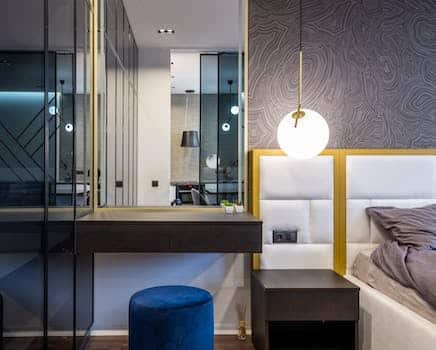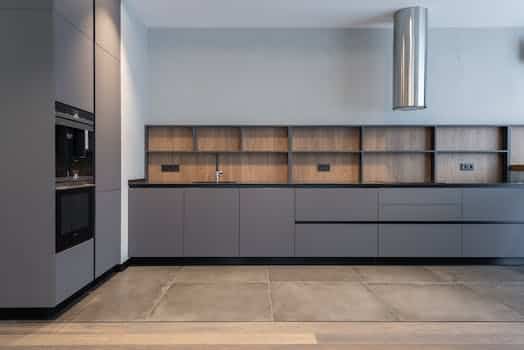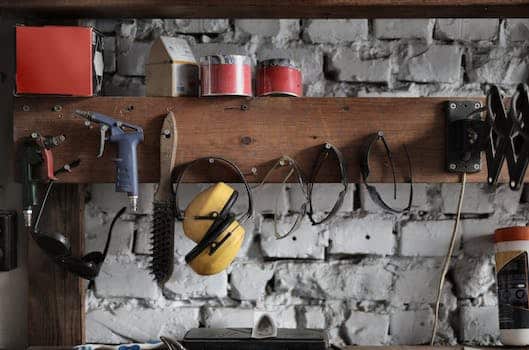Living in a small space can be a challenge, especially when it comes to storage. Fortunately, there are many ways to maximize the space you have, including the use of built-in shelves. Built-in shelves can add both storage and style to your home, while also making the most of limited square footage. In this article, we’ll explore some tips and ideas for incorporating built-in shelves into small spaces, so you can make the most of every inch of your home.
- 1. Maximizing Space with Built-in Shelves
- 1.1. 1. Benefits of Built-in Shelves
- 1.2. 2. Types of Built-in Shelves for Small Spaces
- 1.3. 3. Choosing the Right Materials for Built-in Shelves
- 1.4. 4. Measuring and Planning for Built-in Shelves
- 1.5. 5. Installing Built-in Shelves
- 2. Benefits of Built-in Shelves
- 2.1. 1. Saving Space and Adding Storage
- 2.2. 2. Customization and Personalization
- 2.3. 3. Enhancing Aesthetics and Functionality
- 2.4. 4. Increasing Home Value
- 2.5. 5. Cost-Effective and Long-Lasting
- 3. Types of Built-in Shelves for Small Spaces
- 3.1. 1. Wall-Mounted Shelves
- 3.2. 2. Corner Shelves
- 3.3. 3. Floor-to-Ceiling Shelves
- 3.4. 4. Under-Stair Shelves
- 3.5. 5. Over-Door Shelves
- 4. Choosing the Right Materials for Built-in Shelves
- 4.1. 1. Wood
- 4.2. 2. Metal
- 4.3. 3. Glass
- 4.4. 4. Acrylic
- 4.5. 5. Composite Materials
- 5. Measuring and Planning for Built-in Shelves
- 5.1. 1. Assessing Available Space and Storage Needs
- 5.2. 2. Sketching Designs and Mapping Out Shelving Units
- 5.3. 3. Taking Accurate Measurements and Calculating Materials
- 5.4. 4. Considering Lighting and Electrical Access
- 5.5. 5. Consulting with a Professional Contractor
- 6. Installing Built-in Shelves
1. Maximizing Space with Built-in Shelves
Built-in shelves are a great way to maximize space in small areas. By incorporating shelves into the walls, you are able to utilize every inch of available space. Built-in shelves can be installed in any room of the house, including the living room, bedroom, and kitchen. They can be used to store books, decorative items, and even kitchen supplies. The best part about built-in shelves is that they can be customized to fit your specific needs. You can choose the size, shape, and color of the shelves to match the style of your home. With built-in shelves, you can create a functional and stylish space in even the smallest of rooms.
1.1. 1. Benefits of Built-in Shelves
Built-in shelves are an excellent solution for maximizing space in any small room. They offer a variety of benefits that traditional standalone furniture cannot match. One of the most significant benefits of built-in shelves is that they can be customized to fit any space. This means that you can take advantage of every nook and cranny in your room, making the most of your available space.
Another benefit of built-in shelves is that they are incredibly versatile. They can be used to store books, display art, or even house your television and sound system. This versatility allows you to create a personalized storage solution that meets all of your needs.
Finally, built-in shelves are an excellent investment. They are built to last and can increase the value of your home. Additionally, they eliminate the need for bulky furniture, which can help make your room feel more spacious and open.
1.2. 2. Types of Built-in Shelves for Small Spaces
When it comes to maximizing space in small areas, built-in shelves can be a game-changer. Not only do they provide additional storage, but they can also add a decorative element to the room. There are several types of built-in shelves that can be used in small spaces, each with their own unique advantages.
1. Floating Shelves – These shelves are attached to the wall without any visible brackets or supports, giving them a clean and modern look. They are great for displaying decorative items or storing books and can be installed in any room.
2. Corner Shelves – Corners are often overlooked in small spaces, but they can be the perfect spot for a built-in shelf. Corner shelves can be custom-made to fit the space and can be used for storage or as a display area for decorative items.
3. Built-In Bookcases – If you have a small room that needs storage for books or other items, a built-in bookcase can be a great solution. These shelves can be designed to fit any space and can be customized with doors or drawers for additional storage.
4. Recessed Shelves – Recessed shelves are built into the wall, making them a great space-saving option. They can be used in bathrooms for storing toiletries or in living rooms for displaying decorative items.
No matter what type of built-in shelves you choose, they can help you maximize your space and create a more organized and visually appealing room.
1.3. 3. Choosing the Right Materials for Built-in Shelves
Choosing the right materials for built-in shelves is crucial in maximizing space in small areas. The first consideration is the durability of the materials. Since built-in shelves are attached to the walls, they need to be sturdy enough to hold the weight of the items placed on them. Some of the best materials for built-in shelves include solid wood, plywood, and MDF. Solid wood is the most durable option, but it can be expensive. Plywood is a more affordable alternative that is also strong and sturdy. MDF is another budget-friendly option that is easy to work with and provides a smooth finish. The next consideration is the style of the materials. Built-in shelves should complement the overall design of the room. For a modern look, metal or glass shelves can be used. Wooden shelves provide a classic look that is timeless. Finally, the cost of the materials should also be taken into account. Budget-friendly options like MDF or plywood can be a great choice for those who want to maximize space without breaking the bank.
1.4. 4. Measuring and Planning for Built-in Shelves
Measuring and planning for built-in shelves is crucial to ensure that the shelves fit perfectly in the designated space. Start by measuring the area where the shelves will be installed. Take into consideration any obstructions, such as electrical outlets or light switches, and adjust the measurements accordingly. It’s also important to plan the placement of the shelves so that they are functional and aesthetically pleasing. Consider the height and depth of the shelves to accommodate different items that will be stored. With careful planning and measuring, built-in shelves can maximize space in small areas and provide ample storage.
1.5. 5. Installing Built-in Shelves
Installing built-in shelves is an excellent way to maximize space in small areas. These shelves can be customized to fit any space, from a tiny nook to an entire wall. Built-in shelves are also a great way to add storage and display space to your home without taking up valuable floor space. To install built-in shelves, you will need to measure the space, choose the right materials, and follow a few simple steps. With a little bit of planning and effort, you can create beautiful and functional built-in shelves that will make the most of your small space.
2. Benefits of Built-in Shelves
Built-in shelves are a great option for maximizing space in small areas. They offer a custom fit and can be designed to fit any space, no matter how awkward the shape or size. By utilizing built-in shelves, you can eliminate the need for bulky furniture, which can take up valuable floor space. Additionally, built-in shelves provide a sleek and modern look that can enhance the overall aesthetic of the room. They allow you to showcase your favorite items, while also providing a functional storage solution. Overall, built-in shelves are a practical and stylish way to make the most out of any small space.
2.1. 1. Saving Space and Adding Storage
Built-in shelves are a great way to maximize space in small areas. They allow you to save space by utilizing the walls, and they also add storage. In fact, built-in shelves can provide more storage than freestanding furniture because they can be customized to fit the space perfectly. By adding shelves to a room, you can create more storage for books, decorative items, and other essentials without taking up valuable floor space. This is especially beneficial in small apartments or homes where space is at a premium. With built-in shelves, you can keep your belongings organized and easily accessible, while also creating a visually appealing display.
2.2. 2. Customization and Personalization
Built-in shelves are a great way to maximize space in small rooms. One of the biggest benefits of built-in shelves is the ability to customize and personalize them to fit your specific needs. This means that you can create shelves that are the perfect size and shape for your space, and that can hold all of your belongings. Additionally, built-in shelves can be designed to match the style of your room, making them a seamless addition to your decor. Customization and personalization are key benefits of built-in shelves, and they can help you create a functional and stylish space in even the smallest of rooms.
2.3. 3. Enhancing Aesthetics and Functionality
Built-in shelves not only maximize space but also enhance the overall aesthetics and functionality of a room. These shelves can be customized to fit any space, regardless of its size or shape. With built-in shelves, you can create a seamless look that blends in with the rest of the room’s design. Additionally, built-in shelves can be used to display decorative items, store books, or even serve as a room divider. They provide a practical solution for small spaces, allowing you to make the most out of every inch of available space.
2.4. 4. Increasing Home Value
Built-in shelves not only provide additional storage space but can also increase the value of your home. By incorporating these shelves into your home design, you are creating a more functional and organized space that potential buyers will appreciate. This can be especially beneficial in small spaces where every inch of storage counts. Additionally, built-in shelves can be customized to fit the style and aesthetic of your home, adding a unique touch that will set your home apart from others on the market.
2.5. 5. Cost-Effective and Long-Lasting
Built-in shelves are a cost-effective and long-lasting solution for small spaces. Unlike freestanding furniture, built-in shelves are custom-made to fit the specific dimensions of the room. This means that every inch of available space can be utilized to its fullest potential. In addition, built-in shelves are sturdy and durable, as they are anchored directly into the wall. This makes them a smart investment for homeowners who want to maximize their storage space without having to worry about replacing worn-out furniture.
3. Types of Built-in Shelves for Small Spaces
Built-in shelves are a great way to maximize space in small areas. There are several types of built-in shelves that can be used to create more storage without taking up valuable floor space. These include recessed shelves, floating shelves, corner shelves, ladder shelves, and built-in bookcases. Each type has its own advantages and can be customized to fit the specific needs of the space. Recessed shelves are perfect for tight spaces and can be tucked into the wall for a seamless look. Floating shelves provide a modern and minimalistic vibe and can be arranged in any pattern or configuration. Corner shelves are great for utilizing awkward corners and can add visual interest to a room. Ladder shelves are a stylish and functional addition to any space and can be used for both storage and display. Built-in bookcases are a classic choice and can be customized to fit any room, from a home office to a living room. With so many options to choose from, built-in shelves are a smart solution for maximizing storage in small spaces.
3.1. 1. Wall-Mounted Shelves
Wall-mounted shelves are an excellent way to maximize space in small areas. They are versatile, easy to install, and can be customized to fit any room’s style. There are many different types of built-in shelves available for small spaces, each with their own unique benefits. Let’s take a look at some of the most popular options.
3.2. 2. Corner Shelves
Corner shelves are a great option for small spaces as they utilize the often-overlooked corners of a room. They can easily be built in and can provide ample storage space for books, decorations, and other items. Corner shelves come in a variety of materials such as wood, metal, and glass, and can be customized to fit the style of any room. They are also a great option for displaying decorative items such as plants or picture frames, allowing you to maximize both storage and aesthetic appeal in your small space.
3.3. 3. Floor-to-Ceiling Shelves
Floor-to-ceiling shelves are a great option for maximizing space in small areas. These shelves provide ample storage space while taking up minimal floor space. They can be built into any room, from the living room to the bathroom, and can be customized to fit any style or decor. Floor-to-ceiling shelves can also be used to create a focal point in a room, showcasing your favorite books, artwork, or decorative items.
3.4. 4. Under-Stair Shelves
Under-stair shelves are a creative and practical solution for small spaces. The space under the stairs is often overlooked and can be used to create additional storage or display areas. Built-in shelves under the stairs can be customized to fit the space and can be used for a variety of purposes, such as storing books, displaying artwork, or even creating a small home office. With the right design, under-stair shelves can not only maximize space but also add a unique and stylish touch to your home.
3.5. 5. Over-Door Shelves
Over-door shelves are a great option for small spaces where floor and wall space is limited. These shelves are designed to fit over the top of a door, creating additional storage space without taking up any additional floor or wall space. They can be used to store a variety of items, including towels, linens, toiletries, and cleaning supplies. Over-door shelves are available in a range of sizes and styles, making it easy to find one that fits your needs and complements your decor. Some over-door shelves even come with built-in hooks or baskets, providing even more storage options.
4. Choosing the Right Materials for Built-in Shelves
When it comes to maximizing space in small areas, built-in shelves are a great solution. However, choosing the right materials for these shelves is crucial for their functionality and durability. One important factor to consider is the weight capacity of the materials. For heavier items, such as books or electronics, stronger materials like solid wood or metal brackets may be necessary. Another consideration is the style and overall aesthetic of the shelves. For a more modern look, glass or acrylic shelves may be preferred, while natural wood or rustic finishes may be better suited for a cozy or traditional feel. Ultimately, the right materials will depend on personal preference, budget, and the specific needs of each space.
4.1. 1. Wood
When it comes to building shelves, one of the most important decisions you’ll make is choosing the right material. Wood is a popular choice because of its durability and versatility. There are many types of wood to choose from, each with its own unique characteristics. Some of the most common types of wood used for built-in shelves include oak, maple, cherry, and pine. Oak is a strong and durable wood that is often used for furniture. Maple is a hard wood that is known for its beauty and durability. Cherry is a popular choice for its rich color and beautiful grain. Pine is a soft wood that is easy to work with and is often used for rustic or country-style furniture. Ultimately, the type of wood you choose will depend on your personal style, budget, and the look you want to achieve.
4.2. 2. Metal
Metal is a popular choice for built-in shelves because it is durable and can support heavy items. When choosing the right metal for your shelves, consider the style of your space and the weight of the items you plan to store. Stainless steel is a sleek and modern option that can resist rust and corrosion. Aluminum is lightweight and easy to clean, making it a practical choice for kitchens and bathrooms. For a more industrial look, consider using wrought iron or blackened steel. These metals can provide a bold contrast to lighter colored walls and furniture. No matter what metal you choose, be sure to select brackets and supports that can handle the weight of your shelves and items.
4.3. 3. Glass
Glass is a great material to consider for built-in shelves, especially in smaller spaces. It can create the illusion of more space and add a touch of elegance. Additionally, glass shelves are easy to clean and maintain. However, it is important to keep in mind that glass can be fragile and may not be the best choice for heavy items or high-traffic areas. If you do choose glass for your built-in shelves, consider using tempered glass for added durability and safety.
4.4. 4. Acrylic
Acrylic is a great option for built-in shelves in small spaces because it is lightweight and has a sleek, modern look. It is also durable and easy to clean, making it a practical choice for high-traffic areas. Acrylic shelves can be custom-cut to fit any space, and can even be tinted or frosted for added style. However, it is important to note that acrylic is not as strong as other materials, so it may not be the best option for heavy items or items that require a lot of support. Overall, acrylic is a versatile and stylish choice for maximizing space with built-in shelves.
4.5. 5. Composite Materials
Composite materials are becoming increasingly popular for built-in shelves due to their durability and versatility. These materials are made by combining two or more different types of materials to create a stronger and more resilient product. Some common types of composite materials used for built-in shelves include MDF (medium-density fiberboard), particleboard, and plywood. MDF is a popular choice due to its uniformity and smooth surface, making it easy to paint or veneer. Particleboard is another cost-effective option, but it is less durable than MDF and can be prone to warping over time. Plywood is a stronger and more durable option, but it is also more expensive. When choosing the right material for your built-in shelves, consider the weight of the items you will be storing, as well as the overall aesthetic you want to achieve. Composite materials can offer a wide range of benefits, including increased durability, easy maintenance, and the ability to customize the finish to match your decor.
5. Measuring and Planning for Built-in Shelves
When planning for built-in shelves, it is important to measure the space accurately. This includes not only the height, width, and depth of the area where the shelves will be installed, but also any obstacles or irregularities that may affect the design. Once the space has been measured, it is important to plan the layout of the shelves to maximize storage and functionality while also considering aesthetic appeal. This may involve incorporating different sizes and shapes of shelves, as well as leaving open spaces for decorative items or larger objects. Overall, careful measuring and planning are essential for creating effective and attractive built-in shelves in small spaces.
5.1. 1. Assessing Available Space and Storage Needs
Before you begin planning for built-in shelves, it’s important to assess the available space and storage needs. Measure the area where you want to install the shelves to ensure that they will fit properly. Consider the height, width, and depth of the shelves, as well as any obstacles or obstructions in the space. Additionally, think about what items you want to store on the shelves and how much space they will require. This will help you determine how many shelves you need and what size they should be. By taking the time to measure and plan, you can ensure that your built-in shelves are both functional and aesthetically pleasing.
5.2. 2. Sketching Designs and Mapping Out Shelving Units
When it comes to maximizing space in small areas, built-in shelves are a great solution. Before diving into the construction process, however, it’s important to measure and plan out the shelving units. Sketching designs and mapping out the placement of the shelves can help ensure that the end result is both functional and aesthetically pleasing. This step is particularly important if the shelves will be built into a tight or irregularly-shaped space. Taking the time to measure and plan will save time and frustration down the road, and will ultimately result in a more successful project.
5.3. 3. Taking Accurate Measurements and Calculating Materials
Before you start building your built-in shelves, it is important to take accurate measurements and calculate the materials you will need. Begin by measuring the height, width, and depth of the space where you want to install the shelves. Take note of any obstacles such as electrical outlets or air vents that may need to be worked around.
Next, create a plan for the shelves. Decide how many shelves you want and how far apart they should be. Consider the types of items you will be storing on the shelves and adjust the measurements accordingly.
With your measurements and plan in hand, you can now calculate the amount of materials you will need. This includes wood for the shelves and frame, screws, brackets, and any other hardware that may be necessary. Be sure to add a little extra for mistakes or unexpected issues that may arise during the building process.
5.4. 4. Considering Lighting and Electrical Access
When measuring and planning for built-in shelves, it is important to consider lighting and electrical access. If you plan on storing electronics or displaying decorative items that require power, you will need to ensure that electrical outlets are easily accessible. Additionally, incorporating lighting into your built-in shelves can enhance the overall aesthetic of the space and provide functional lighting for reading or working. Be sure to consult with a licensed electrician to ensure proper installation and safety.
5.5. 5. Consulting with a Professional Contractor
When it comes to maximizing space with built-in shelves, consulting with a professional contractor can make a world of difference. Not only can they offer expert advice and guidance, but they can also accurately measure and plan for the shelves to ensure they fit seamlessly into your small space. This is particularly important when dealing with tight or awkward spaces, as a professional contractor will know how to make the most of every inch available. By working with a contractor, you can also ensure that the shelves are sturdy and safe, as well as aesthetically pleasing. So, if you want to get the most out of your small space with built-in shelves, it’s definitely worth considering consulting with a professional contractor.
6. Installing Built-in Shelves
One of the best ways to maximize space in a small room is by installing built-in shelves. These shelves can be customized to fit the exact dimensions of your space and can be designed to match the style of your room. Built-in shelves can be used to store books, display decorative items, or even act as a room divider. The installation process can be done by a professional or as a DIY project, depending on your skill level and preferences. Regardless of how you choose to install them, built-in shelves are a great investment for anyone looking to make the most of their small space.
6.1. 1. Preparing the Space and Materials
Before installing built-in shelves, it is important to prepare the space and materials. Start by measuring the area where the shelves will be installed. This will help determine how many shelves can fit and what size they should be. Next, gather all necessary materials such as shelves, brackets, screws, and a level. Make sure the walls are clean and free of any debris or flaking paint. Finally, mark the placement of the shelves on the wall using a pencil and level to ensure they are even.
6.2. 2. Assembling and Installing the Shelving Units
Once you have all the necessary materials and tools, it’s time to start assembling and installing your built-in shelves. Follow these steps:
1. Measure the space where you want to install the shelves. Use a level and a pencil to mark where each shelf will go.
2. Cut your shelves to the desired length using a saw. Sand the edges to smooth them out.
3. Attach the brackets to the wall using a drill and screws. Make sure they are level and secure.
4. Place the shelves on top of the brackets. Make sure they are level and secure.
5. Finish the shelves by painting or staining them to match your decor.
6.3. 3. Securing and Finishing the Shelves
Once the shelves are in place, it is important to secure them properly. This can be done by attaching them to the wall studs using screws or brackets. It is also important to finish the shelves to protect them from damage and give them a polished look. This can be done by sanding the edges and applying a coat of paint or stain. Adding trim or molding can also enhance the appearance of the shelves and make them look like a seamless part of the room. With proper installation and finishing, built-in shelves can provide both function and style to any small space.
6.4. 4. Adding Decorative Elements and Accessories
Adding decorative elements and accessories can bring a touch of personality to your built-in shelves while also maximizing their functionality. Start by considering the color scheme of the room and choose decorative items that complement it. This could include vases, picture frames, decorative boxes, or even small plants.
Another way to add interest to your shelves is by varying the height and depth of the items you display. For example, you could place a tall vase next to a stack of books or use a decorative box to add height to a shorter item.
Lastly, don’t forget about lighting. Adding small LED lights or even candles can create a cozy and inviting atmosphere while also highlighting your favorite items on the shelves.
6.5. 5. Maintaining and Cleaning the Shelves
Once you have installed your built-in shelves, it is important to maintain and clean them regularly to keep them looking their best. Dust and debris can accumulate on the shelves, making them look dirty and unkempt. To prevent this, use a soft cloth or feather duster to remove dust and cobwebs from the shelves. If the shelves are particularly dirty, you can use a mild soap and water solution to clean them. Be sure to dry the shelves thoroughly after cleaning to prevent any water damage. Additionally, it is important to regularly organize and declutter the items on your shelves to keep them looking neat and tidy. By taking the time to maintain and clean your built-in shelves, you can ensure that they remain a beautiful and functional addition to your small space for years to come.
Conclusion
Incorporating built-in shelves into small spaces is a smart way to maximize storage and create a visually appealing design. With careful planning and consideration of the space, you can create a functional and stylish storage solution that will make a big impact in your home.






These 10 innovative and imaginative DIY home decor ideas from [object Object] provide a refreshing approach to enhancing ones living…